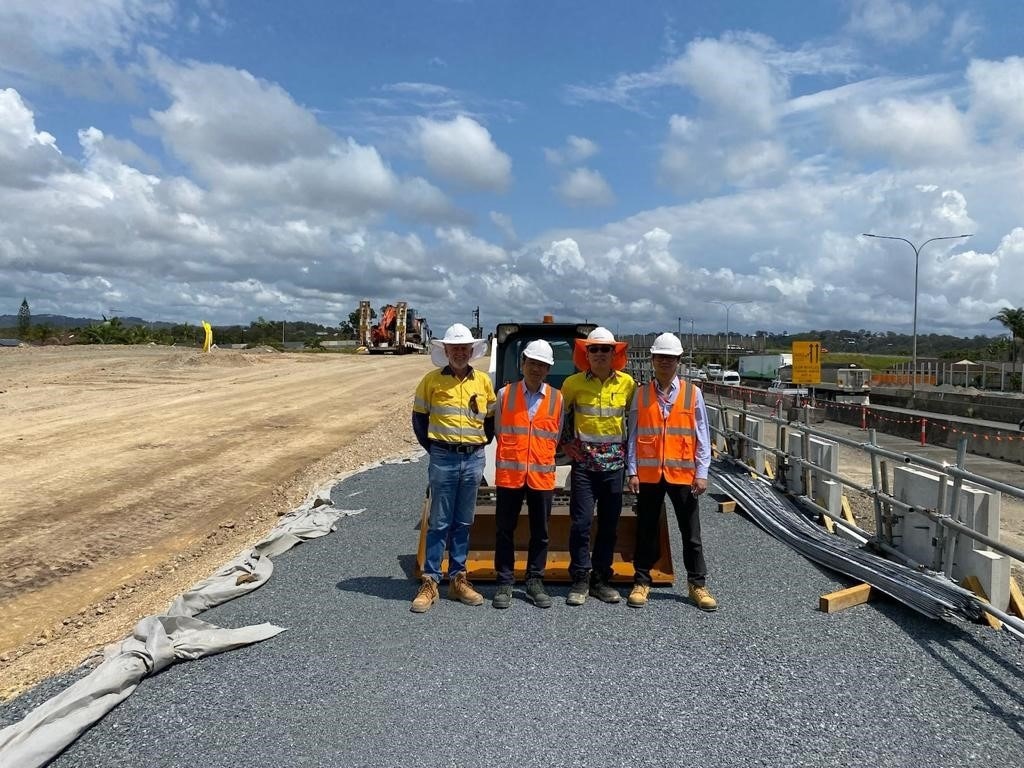A research collaboration between Geoinventions Consulting Services and Griffith University has resulted in a world-first multi-functional geotechnical sensor capable of monitoring the health of Australia’s roadways, improving safety and saving taxpayer money.
 Geoinventions' project team PB2T project (Pacific Motorway M1 Palm Beach to Tugun Upgrade). Image Credit: IMCRC
Geoinventions' project team PB2T project (Pacific Motorway M1 Palm Beach to Tugun Upgrade). Image Credit: IMCRC
With co-funding from the Innovative Manufacturing Cooperative Research Centre (IMCRC), the project harnessed micro-electro-mechanical systems (MEMS) technology and the Internet of Things to create a smart, robust and energy-efficient sensor suited to Australia’s extreme environments.
Since concluding the project, Geoinventions has successfully patented the sensor, which will be manufactured locally on the Gold Coast in Queensland.
Barry Kok, Geoinventions’ Operations Director, said the sensor was set to provide Australian industry with an alternative to devices currently on the market, which were typically more costly and less advanced.
“With IMCRC’s support, we have developed and commercialised a multi-functional, customisable smart sensor that does the job of two devices traditionally used in soft-soil engineering.
“Moving forward, we will continue to collaborate with other Australian manufacturers to provide an end-to-end geotechnical solution, taking in feedback to continuously improve both the sensor and production process.”
Professor Dzung Dao, Head of Mechanical Engineering at Griffith University, said by co-funding and facilitating the project, IMCRC had paved the way for an ongoing collaborative relationship with Geoinventions.
“Our partnership has delivered a MEMS sensor manufacturing technique that has a significant advantage over conventional methods. It’s capable of delivering many sensors on one silicon wafer, reducing the manufacturing time, cost and size of the device.
“In addition, the unique design and use of silicon carbide material ensure the sensor can withstand the harsh underground environments at the sites where it will be embedded. We look forward to further refining the sensor design with Geoinventions in the coming year.”
David Chuter, IMCRC’s CEO and Managing Director, said the project demonstrated yet again the power of industry-led research and development (R&D) in catalysing mutually beneficial partnerships and delivering tangible outcomes for Australian manufacturing.
“With applications across the engineering, civil contracting and infrastructure sectors, Geoinventions and Griffith’s Australian-made sensor will revolutionise traditional geotechnical monitoring, mitigating risk and safety issues in construction.
“And by manufacturing the sensors in Australia, Geoinventions will contribute to the growth of our advanced manufacturing sector, creating jobs, strengthening local supply chains and generating global export opportunities.”